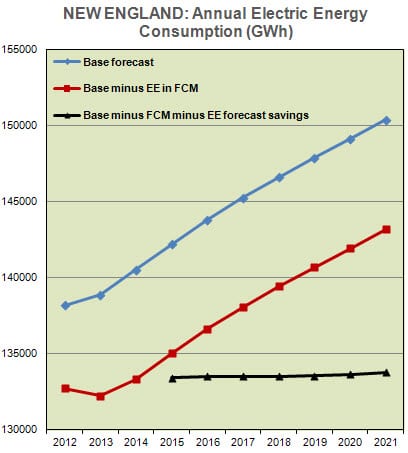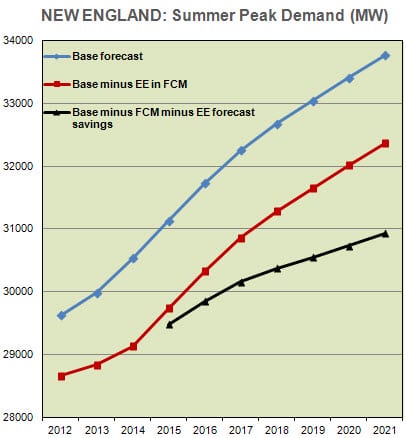ISO-NE develops first multistate, long-term energy-efficiency forecast
 Earlier this year, ISO New England’s system planners completed the first multistate, long-term energy-efficiency (EE) forecast in the nation. The EE forecast falls under the ISO’s long-range planning responsibilities, which include the annual production of a 10-year load forecast.
Earlier this year, ISO New England’s system planners completed the first multistate, long-term energy-efficiency (EE) forecast in the nation. The EE forecast falls under the ISO’s long-range planning responsibilities, which include the annual production of a 10-year load forecast.
About Long-Term Forecasting
Having an accurate long-term load forecast is critical to the ISO’s ability to identify power system improvements needed to meet future demand for electricity. The ISO develops a long-term load forecast each year using state and regional economic forecasts, 40 years of weather history in New England, and other factors, to predict how much electricity the region’s residents and businesses will use over the course of each year for the next 10 years. The ISO also forecasts the highest point at which demand will peak in each of the next 10 years.
Effects of Energy Efficiency
While the long-term forecast projects slow growth in both peak demand and energy consumption, another dynamic is at work. The New England states have a long-standing commitment to reduce electricity use and have a long history of creating and funding EE programs. In fact, the six states collectively spent $1.2 billion on energy-efficiency programs between 2008 and 2011, with cumulative savings in annual energy consumption of 3,500 gigawatt-hours (GWh) and a total reduction in peak demand of 500 megawatts (MW) over that four-year period, according to data collected by the ISO from program administrators.
In recognition of the states’ large investments in energy-efficiency (EE) programs, the ISO has worked intensively with stakeholders since 2009 to develop a methodology that would provide an accurate estimate of how much electric energy will be saved over the 10-year planning horizon.
The ISO learned that the New York ISO (NYISO) developed a single-state model for forecasting EE savings, which had been in use for a short time. The ISO determined that NYISO’s production cost model could be modified to incorporate data from the more than 125 state-sponsored EE programs in six states, each with differing priorities and approaches.
The results of the first EE forecast, completed in 2012, indicate that the states will spend about $5.7 billion on energy efficiency from 2015 through 2021. That investment will reduce the baseline long-term load forecast by an average of 1,343 GWh every year, resulting in 0% growth in average annual electricity consumption. The forecast also shows that EE savings will shave an average of 206 MW off projected peak demand each year.
 When combined with energy-efficiency savings realized through the Forward Capacity Market (FCM), the EE forecast reveals 0% growth in annual electricity consumption.
When combined with energy-efficiency savings realized through the Forward Capacity Market (FCM), the EE forecast reveals 0% growth in annual electricity consumption.
 This chart shows the effect of energy efficiency on peak demand, including both energy-efficiency measures acquired in the FCM and projected savings from the EE forecast.
This chart shows the effect of energy efficiency on peak demand, including both energy-efficiency measures acquired in the FCM and projected savings from the EE forecast.
A recent ISO on Background media briefing provides more information on the development of the forecast, historical findings, and results for 2015 through 2021, both regionally and by state.
- Categories
- Industry News & Developments
- Tags
- energy efficiency, new england states



